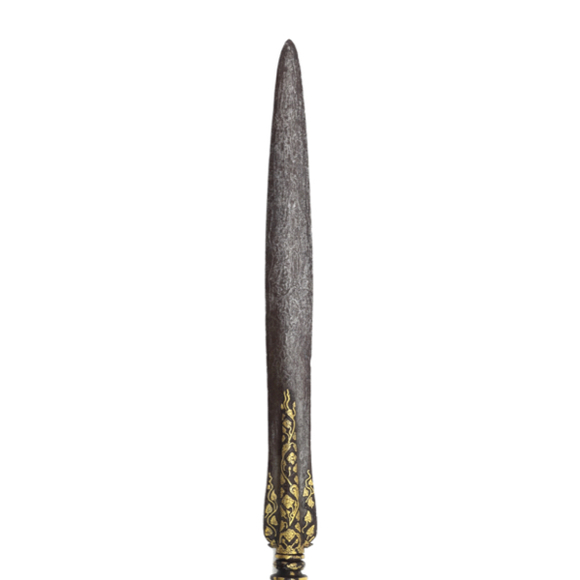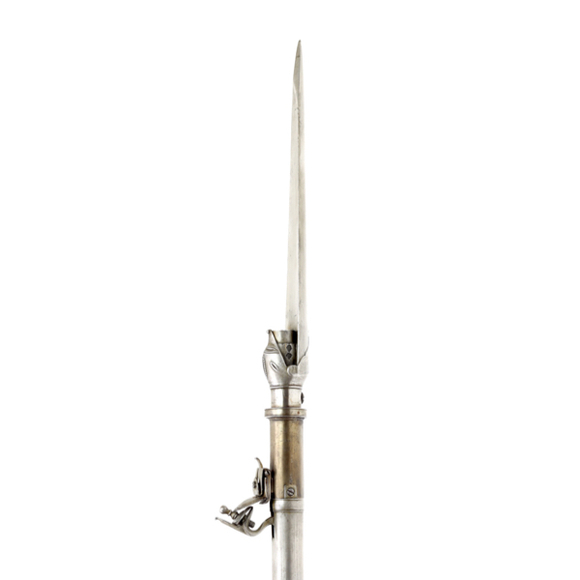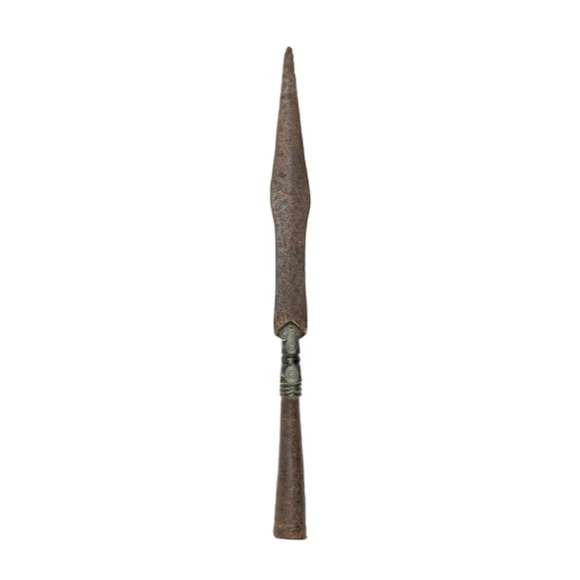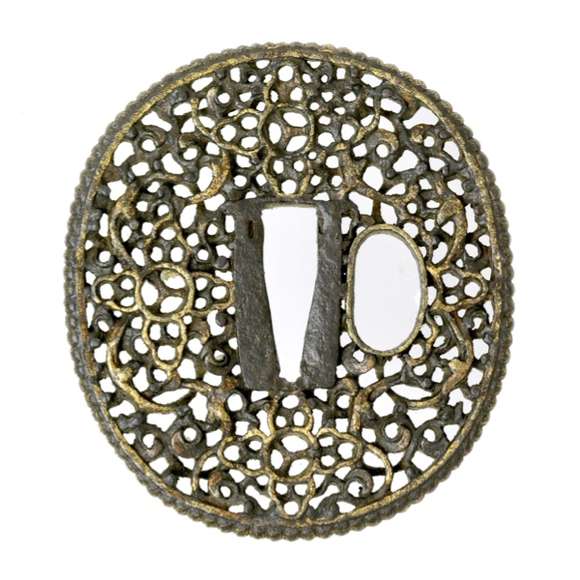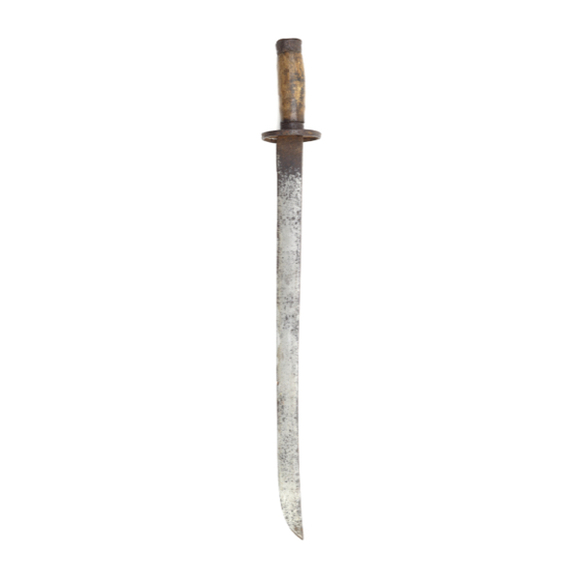Introduction
China is immense and has been home to a great diversity of martial traditions with a lot of regional differences between styles of weapons that were produced and used. For an empire, this could become problematic because if you order a thousand spears from one province, and another thousand from another, to be used on a battlefield elsewhere, one could end up looking at a big difference in cost of material, cost of labor, and also in the final shape, size, and quality of the finished product.
So by the late Qianlong period of the 18th century, the court started to further regulate the design and construction of weapons for its main armies. They brought the vast variety of weapons back to a smaller number of standard styles and regulated their manufacture in a series of texts on regulations and precedents. These texts are now a treasure trove for the arms historian because they are incredibly detailed.
Any Chinese arms enthusiast is probably aware of, or should be aware of, the Huángcháo Lǐqì Túshì (皇朝禮器圖式) or "Illustrated Regulations on the Ceremonial Paraphernalia of the Dynasty" of 1766, based on a 1759 manuscript. It is an illustrated set of regulations on ceremonial equipment with extensive chapters on armament. However, the level of detail provided in the Huángcháo Lǐqì Túshì's is limited because it is merely a catalog of what was supposed to be there and who carried what, when. It were not instructions for workshops.
Luckily for us, such instructions also existed. They are just extremely hard to find. One of these texts is the Qīndìng Gōngbù Jūnqì Zélì (欽定工部軍器則例) or "Imperially Commissioned Regulations and Precedents of Military Equipment for the Board of Works" of the 13th year of Jiaqing, 1808. The Board of Works was one of the six ministries under the Qing, which was responsible for public works, infrastructure, and the production of government equipment, among others arms for the Green Standard Army. Its roughly 6000 pages describe in detail the manufacture of all sorts of military equipment, from flags and tents to armor, firearms, and edged weapons.
Today I present you my translation of the Qīndìng Gōngbù Jūnqì Zélì entry for the chángqiāng (長鎗) or "long spear". These long spears were standard issue military equipment that were among others used by the Hànjūn (漢軍), known in English language literature as the Chinese Bannermen.

Describing the manufacture of the long spear.
From the 1812 Qīndìng Gōngbù Jūnqì Zélì.

A woodblock drawing of a Qing dynasty long spear.
From the 1766 Huángcháo Lǐqì Túshì.
"Construction of the long spear
Every long spear is 1 zhang 3 chi 7 cun long. (Approx. 479.5 cm.)
The inner spearhead and socket are 1 chi 1 cun long. (Approx. 38.5 cm.)
Inserted steel [edge], forge folded [body], polished.
The wooden shaft is finished with vermillion red oil.
On top is added a rain tassel. On the bottom, an iron spike completes the manufacture.
Spearhead is 7 cun long, 1 cun wide, middle 3 fen thick.
(Approx 24.5 long, 3.5 cm wide, 10.5 mm thick.)
The socket is 4 cun long, the circumference is 3 cun 2 fen. Thickness 1 fen.
(Approx 14 cm long, circumference 11.2 cm, 3.5 mm thick.)
It weighs 14 liang 6 qian 4 fen. (Approx. 547 grams.)
Iron spike is 3 cun long, circumference 3 cun 6 fen. Thick 1 fen.
(Approx. 10.5 cm long, circumference 12.6 cm. Thickness 3.5 mm)
Weight 3 liang, 2 qian, 4 fen. (Approx. 121 grams.)
Nails, two pieces, both 1 cun 2 fen long, 2 fen diameter. Each weighs 4 qian 4 fen.
(Approx 4.2 cm long, 7 mm thick. Weight 16.4 grams.)
The total net weight of the above iron is 1 jin, 2 liang 3 qian and 2 fen.
(Approx 684 grams.)
Using raw iron 3 jin 1 liang 8 fen. (Approx 1858.5 grams.)
Steel 2 liang 1 qian. (Approx 78 grams.)
Coal 21 jin 7 qian. (Approx 12.8 kilos.)
Charcoal 7 liang 2 qian 1 fen. (Approx 269 grams.)
Copper 8 fen. (Approx. 3 grams.)
Borax 1 fen 6 li. (Approx 0.6 grams.)
The smith spends 5 fen 8 li workday. (Approx 8 hours 21 minutes.)
The quencher spends 4 li workday. (Approx 34.5 minutes.)
The welder spends 4 li workday. (Approx 34.5 minutes.)
The polisher spends 2 fen 8 li workday. (Approx 4 hours and 2 minutes.)
The grinder spends 8 li workday. (Approx 1 hour and 9 minutes.)
The assembler spends 2 fen workday. (Approx 2 hours and 52 minutes.)
Wooden shaft long 1 zhang 2 chi. Diameter 1 cun 2 fen per shaft.
(Approx. 420 cm. Diameter 4.2 cm per shaft.)
Woodworker spends 2 fen 3 li workday. (Approx 3 hours and 19 minutes.)
Oiled wooden pole surface 4 chi 4 cun 2 fen 8 li square. (Approx 155 by 155 cm).
Using 1 liang 1 qian cooked tung oil. (Approx. 41 grams.)
Vermillion 1 liang 6 fen. (Approx. 59.7 grams.)
Sesame oil 8 fen 8 li. (Approx. 32.8 grams.
The oiler spends 4 li workday. (Approx. 34.5 minutes.)
Leather money 2 pieces, each piece diameter 2 cun 8 fen. (Approx. 9.8 cm.)
Leather cover one piece long 1 chi 1 cun 5 fen. Top wide 1 cun 2 fen. Mouth diameter 1 cun 3 fen.
(Approx. 40.25 cm long. Top 4.2 cm wide, mouth diameter 4.55 cm.)
For the above is used:
Cowhide, width 1 chi length 6 cun 2 fen. (Approx. 35 cm by 21.7 cm.)
Rain tassel 2 liang. (Approx. 74.6 grams.)
Green hemp [cord] 1 qian 2 fen 8 li. (Approx. 4.8 grams.)
The leatherworker spends 1 fen 2 li workday. (Approx. 1 hour 44 minutes.)
The tasselmaker spends 5 li workday. (Approx. 43 minutes.)
For lacquering the leather cover, a surface of 4 cun 6 fen square (Approx. 16.1 by 16.1 cm) is used:
Cooked lacquer 1 qian 8 fen. (Approx. 6.7 grams.)
The lacquerer spends 2 li workday. (Approx. 17 minutes.)"
Comments
A few things stand out for me in the description of the long spear construction. It is made by no less than 11 different people, of which six people alone work on the iron/steel parts.
The spearhead uses raw iron, steel, borax, copper, coal and a small amount of charcoal. The borax is used as a flux to forge fold the iron and steel, probably adding charcoal to the process to add carbon. The copper is probably used for soldering the socket to the head. Coal is used in the forging process.
The 8 hours 21 minutes set for forging the head is surprising at first, but we need to keep in mind they produced it from raw iron (pig iron) that still had to be refined by repeated forge folding, and they had to forge weld the steel in as well.

An antique Chinese spearhead. Such spearheads often have an iron or brass/bronze bolster.
The one described in this text does not have that.
Sold by Mandarin Mansion in 2020.
The oil finishing is also interesting, with a recipe using 41 grams of cooked tung oil, 59.7 grams of vermillion (cinnabar powder) and 32.8 grams of sesame oil. The latter is normally deemed unsuited for the treatment of wood, but apparently, it adds something of value when mixed with tung and cinnabar.
We can also read in the text that a yǔyīng (雨纓) or "rain tassel" is made by using 74.6 grams of "rain tassel" and 4.8 grams of green hemp cord. Such rain tassels are made of yak hair, usually dyed red. They got their name because they were worn on official summer hats used among others while praying for rain.
Finally, the spear apparently comes with a lacquered leather scabbard or cover to protect the head. It consists of cowhide and two leather rings or washers called píqián (皮錢), literally "leather money", probably referring to their shape. It is unclear to me what the assembled scabbard should look like with these two píqián.
In schematics

The long spear and its scabbard, drawn to scale.
Valuable as this information is, in reading these texts we need to keep in mind that they were merely an attempt to regulate arms manufacture. Extant antiques and late Qing photographs suggest that this standardization was probably never fully accomplished.
About conversions
In the above, traditional Qing measures are used. The conversion of these old measures is, unfortunately, not as straightforward as I would like.

Some antique rulers I collected in Beijing in 2005-2007.
It shows two main types, carpenter (top) and tailor (bottom).
Note the differences even within one type.
Length: Chinese rulers of a chi long were far from uniform. There were differences between trades, between guilds within the same trade, and also vast regional differences in the interpretation of just how long a chi was. That said, a chi was usually between 30-36 cm and when looking at extant antique arms that were made according to Qing regulations, the Qing armorer's chi seems to have been roughly 35 cm.1 So that's what I used above.
Weight: The above also goes for weight. In 1896 Etienne Zie noted that the Chinese pound, jīn (觔) in Jiangsu weighed 585,79 grams but in Beijing, there was also an alternative jīn in use that weighed 597,12 grams.2 The text was commissioned in Beijing so let's take the Beijing jīn, but keep in mind that this equipment was produced all over the empire.
Time: A Chinese working day, gōng (工) was divided into fēn (分) and lí (釐). A traditional fēn of a normal day, tiān (天) is believed to have been 14.4 minutes, and a lí is one-tenth of that; 1.44 minutes. However, it remains a bit of a puzzle how many fēn went into a working day, gōng as opposed to a full day, tiān. A full working day was probably about 10 hours, as working days in the Beijing guilds typically lasted from 3 a.m. to 5 p.m.3
Notes to conversions
1. I established this by comparing regulations of imperial artifacts with some extant examples in Palace Museum collections.
2. P. Etienne Zi (Siu), S. J.; Pratique des Examens Militaires en Chine. Variétés Sinologiques No 9. Shanghai. Catholic Mission Print. 1896.
3. John Stewart Burgess; The guilds of Peking. New York, Columbia University Press, 1928.

The long spear shown in perspective.

A late Qing photo showing some soldiers with long spears.
Unknown date & photographer.


